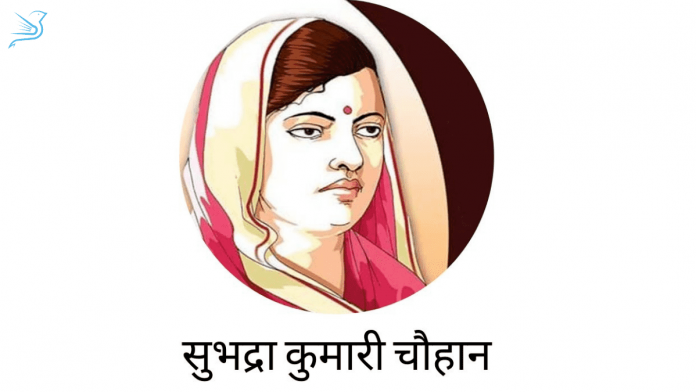Hello dear readers,
Welcome to another interesting and informative blog brought to you by Hranker.com. In today’s blog we are going to learn about the firebrand poetess of Hindi literature Subhadra Kumari Chauhan.
Subhadra Kumari Chauhan (16 August 1904- 15 February 1948) was an Indian poet. One of her most popular poems is “Jhansi ki Rani” (about the courageous Queen of Jhansi)
It’s a proverb that there is more power in a pen than a sword, Veerangana (lady warrior) Subhadra Kumari Chauhan has shown this proverb to be true.
Subhadra Kumari Chauhan
| Born | 16 August 1904, Allahabad United Province of Agra and Oudh British India |
| Died | 15 February 1948, Seoni Central Province of Berar Dominion of India |
| Occupation | Poet |
| Language | Hindi |
| Nationality | Indian |
| Period | 1904-1948 |
| Genre | Poetry |
| Subject | Hindi |
| Spouse | Thakur Lakshman Singh Chauhan |
| Children | 5 |
Today is the 117th birth anniversary of India’s first woman Satyagrahi Subhadra Kumari Chauhan. Subhadra Kumari Chauhan is also known for the poem ‘Jhansi Ki Rani’. On the birth anniversary of Subhadra Kumari Chauhan, Google has honored her by making a doodle.
In which she is wearing a white sari, writing something and in the background, a glimpse of the Rani of Jhansi and the freedom movement is shown.
Showing her talent, Subhadra also started poetry lessons from an early age. The first poem appeared at the age of 9 which she wrote on a neem tree. She not only wrote poems in no time but was also a pioneer in studies. Obviously, she was as fond of her teachers as her classmates. The process of writing poems as a child continued again. Subhadra was married to Laxman Singh. Laxman Singh was a playwright and always supported his wife in moving forward. Together they did a lot of work for Congress. Subhadra used to go among women and encourage them to adopt swadeshi and give up all narrowness. At the same time, she served literature and society while handling her household. Even at the young age of 44, she created a lot.
She was involved in many movements with Mahatma Gandhi. The call for Indian independence reached its height during her early adulthood. As a participant in the Indian Nationalist Movement, Subhadra used her poetry to call others to fight for their nation’s cause. Her poetry and prose primarily focused on hardships that the Indian women overcame “such as gender and caste discrimination”.
Subhadra Kumari Chauhan was the first woman Satyagrahi in India to be arrested, who was imprisoned in Nagpur. In such a situation, every Indian should know about Satyagrahi Subhadra Kumari Chauhan. She continued to make revolutionary statements in the fight for freedom both on and off the page into the 1940s. She published a total of 88 poems and 46 short stories.
Chauhan wrote in the Khariboli dialect of Hindi. She has also written poems for children and some short stories based on the life of the middle-class of the society.
Chauhan passed away on February 15 in 1948. She often said about her death, ‘I don’t have
the idea of leaving this earth even after I die. I want to have a samadhi around which there should be a fair, children playing, women singing.
Legacy:
•The ICGS Subhadra Kumari Chauhan, an Indian Coast Guard ship, was named for the poet. The government of Madhya Pradesh placed a statue of Subhadra Kumari Chauhan before the Municipal Corporation office of Jabalpur.
•On 6 August 1976, India Posts released a postage stamp to commemorate her.
•On 16 August 2021, search engine Google commemorated Subhadra Kumari with a Doodle on her 117th birth anniversary.Google commented: “Chauhan’s poetry remains a staple in many Indian classrooms as a symbol of historical progress, encouraging future generations to stand up against social injustice and celebrate the words that shaped a nation’s history”.
Works:
Collections of poems
- Khilonewala
- Tridhara
- Mukul (1930)
- Yeh Kadamb Ka Ped
These anthologies consist some of the well-known poems like “Jhansi ki Rani”, “Veeron Ka Kaisa Ho Basant” and “Yeh Kadamb Ka Ped”
- “Seedhe-Saade Chitra” (1946)
- “Mera naya Bachpan” (1946)
- “Bikhare Moti” (1932) “Jhansi ki Rani”
Short Stories
- Hingvala (or Hingwala)
This brings us to the end of our blog. Hope you found this article informative. Stay tuned with us as we will be bringing to you many such interesting articles.




